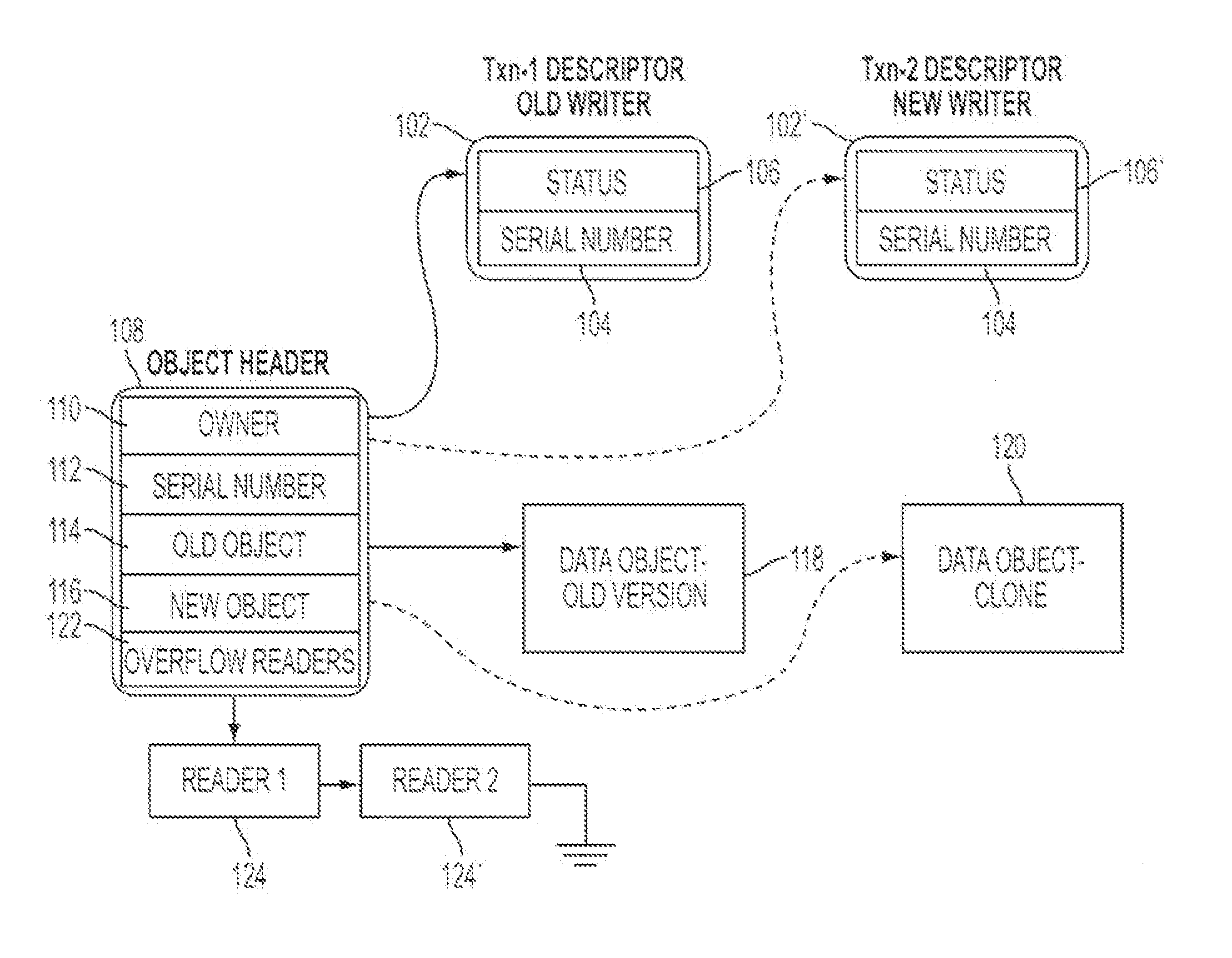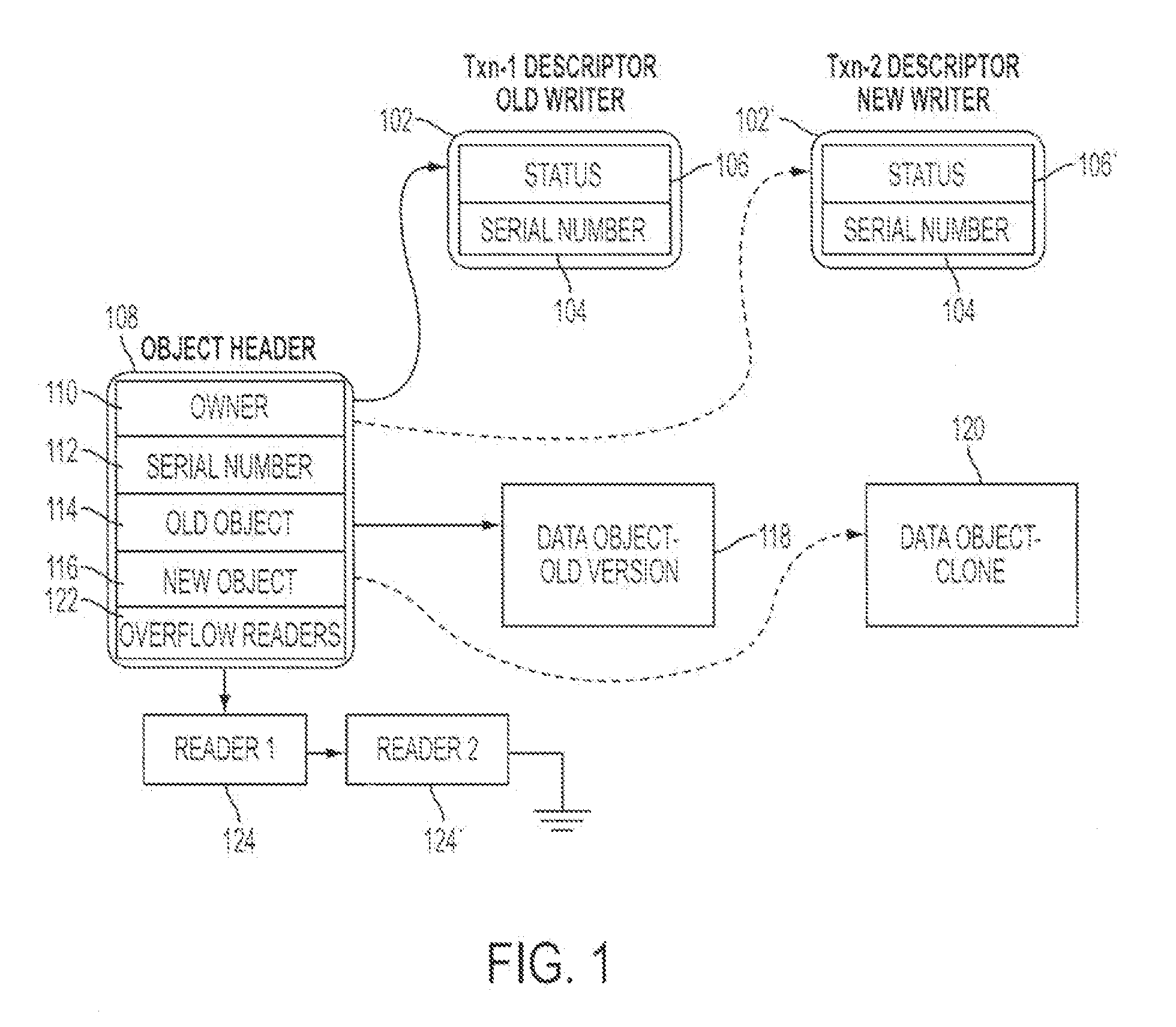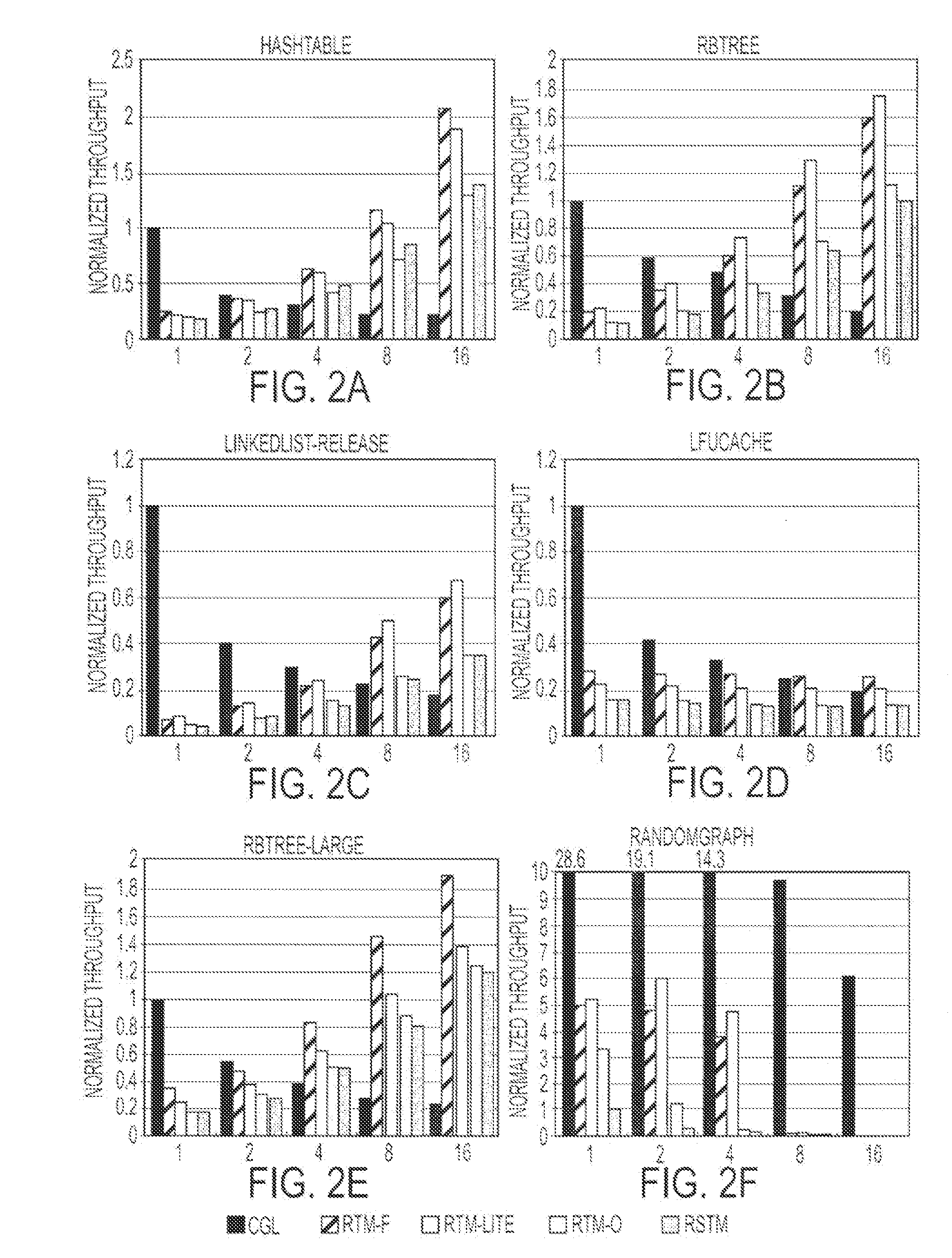System and method for hardware acceleration of a software transactional memory
a hardware acceleration and transactional memory technology, applied in the field of transactional memory, can solve the problems of significant policy embedding in silicon, data versioning and validation overhead, etc., and achieve the effects of improving the performance of common-case bounded transactions, good scalability, and easy implementation efficiency
- Summary
- Abstract
- Description
- Claims
- Application Information
AI Technical Summary
Benefits of technology
Problems solved by technology
Method used
Image
Examples
Embodiment Construction
[0029]A preferred embodiment of the present invention will be set forth in detail with reference to the drawings, in which like reference numerals refer to like elements or steps throughout.
[0030]We will first describe our hardware mechanisms in detail, including instruction set extensions, coherence protocol, and the mechanism used to detect conflicts and abort remote transactions. We will then describe the RTM runtime that leverages this hardware support. We will then evaluate the performance of RTM in comparison to coarse-grain locks, an all-software TM system, and an “RTM-Lite” system that uses alert-on-update but not programmable data isolation. We will also present results to demonstrate the benefits of policy flexibility.
[0031]In terms of hardware support, transactional memory has two principal requirements: the ability to detect when transactions in different threads conflict, and the ability to hide a transaction's updates from other threads until the transaction commits. T...
PUM
 Login to View More
Login to View More Abstract
Description
Claims
Application Information
 Login to View More
Login to View More - R&D
- Intellectual Property
- Life Sciences
- Materials
- Tech Scout
- Unparalleled Data Quality
- Higher Quality Content
- 60% Fewer Hallucinations
Browse by: Latest US Patents, China's latest patents, Technical Efficacy Thesaurus, Application Domain, Technology Topic, Popular Technical Reports.
© 2025 PatSnap. All rights reserved.Legal|Privacy policy|Modern Slavery Act Transparency Statement|Sitemap|About US| Contact US: help@patsnap.com



